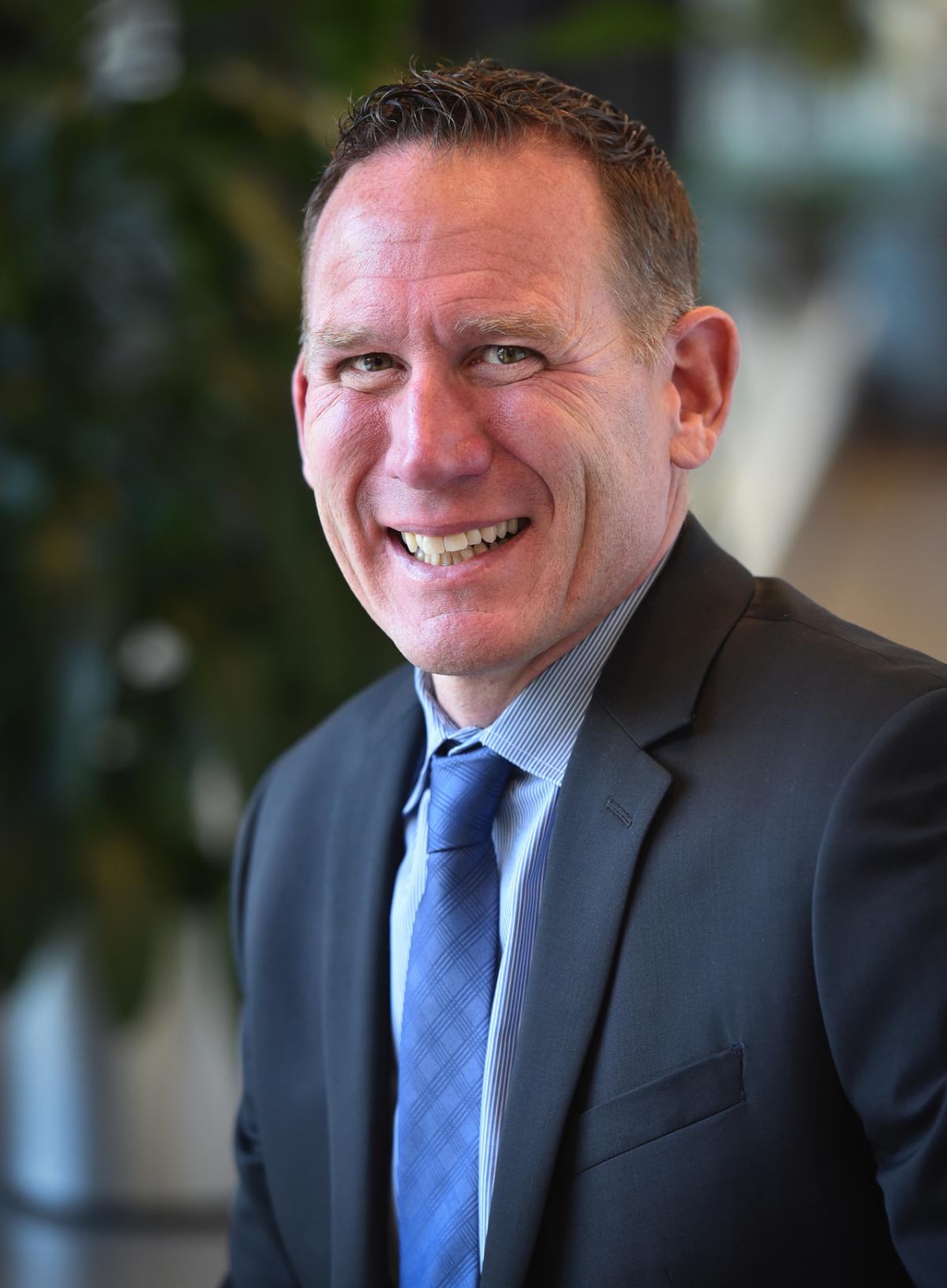A Clear Vision and Strategy
Q&A with PSEG Nuclear President and Chief Nuclear Officer Eric Carr

By Matt Chimento
In July, Eric Carr was named president and chief nuclear officer of PSEG Nuclear. An industry veteran with more than two decades of accumulated experience and insight, Carr sets the vision for – and is charged with sustaining the productive momentum of – the PSEG Nuclear fleet. He recently shared his perspectives and imparted a few of the learnings that influenced and informed his professional path.
Q. What was the entry point for your career into nuclear?
A. My father was a machinist in the power generation field his entire career. The commitment and workmanship that craftsmen like him demonstrated really inspired me to pursue a path in power when I graduated. Then, when I started in maintenance, I felt an immediate sense of reverence for what it means to work in a power plant, as well as an ownership for the components we maintained. When I moved on to operations, I started thinking of the entire plant as my own. It was a humbling experience to be responsible for the safe day-to-day operations of the station. As I later progressed through various leadership positions, I came to truly appreciate the most valuable part of the business: our people.
Q. Sustainability seems to be an increasingly prominent industry theme. What are your views on long-range success and operational viability?
A. There are two sides to our long-term viability. First, the environmental benefits of nuclear power have been recognized by New Jersey as being critical to meeting the goals of the Energy Master Plan. We provide 90% of the state’s carbon-free power, which is exactly why we remain economically viable in an industry that has been significantly challenged by historically low natural gas prices. Second, we must focus on our operational excellence model, which starts with a long-term vision and lays out a playbook to help us get there. Part of that means we consistently define our standards, clearly communicate them to our workforce and constantly reinforce them to achieve sustainable results. Additionally, it’s important to be self-aware and self-correcting of our own issues so that we can continuously improve performance.
Q. It’s not a stretch to say success is tied in many ways to the health and strength of an organization’s culture. How is PSEG Nuclear making progress in that regard?
A. Employee engagement is a vital component of a high-functioning organization. We’ve prioritized growth opportunities, enrichment programs, work-life balance advantages and inclusive offerings because, ultimately, the engagement of our entire team is what makes the difference. Creating this type of continuous learning and improvement environment is how we’ve been able to make significant progress with our core development initiatives – like the Leadership Engagement and Alignment Program, which is a forum for sharing decades’ worth of career advice to develop our leaders of the organization.
Q. What’s the most encouraging type of interaction you have with members of the public when discussing nuclear energy? Do you find that people are interested or even surprised to learn more about the many upsides of the technology?
A. In my experience, it’s all about education when it comes to speaking with anyone who may not be as familiar with the inner workings of a nuclear plant. Our industry is sometimes easy to mischaracterize, but once we break down the walls and confront some of the misconceptions, there’s a whole different conversation to be had. The numerous environmental benefits, the formality and rigor required to precisely maintain and operate the plant, the advanced performance monitoring, the historic production stability – these are all proven attributes worth discussing with someone willing to listen. To identify and advance a clear purpose, vision and strategy for PSEG, we are developing a culture of leaders that reflects the sincerity and impact of that commitment; and we are making measurable progress that represents the remarkable humanity of our people, our innovation in the industry and our continued business excellence.
Q. You’re currently training to compete in an Ironman Triathlon. Was it difficult or even daunting to commit to that goal initially?
A. I apply the same approach to my training as I have to my career: hard work and dedication are the foundation. It also really helps that I’m doing this side-by-side with my wife, who is not only my training partner, but my rock. On top of that, our daughter is our biggest fan and she helps keep us focused on the big picture.

